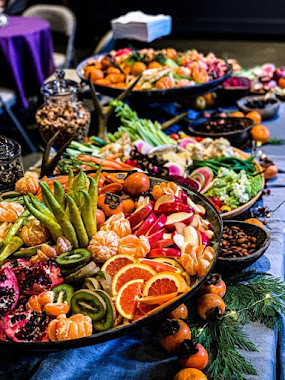3 June, 2024
0 Comments
1 category
Taste is a complex sensory experience that involves both physiological and psychological processes.
Here’s a closer look:Five basic tastes are traditionally recognized: umami, sweet, sour, bitter, and salty. Each of these flavors is associated with a particular class of chemicals:
Sugars are often thought of as being sweet.
Acidity is related to sourness.
Alkaloids are just one type of compound that can cause bitterness.
Salts, especially sodium chloride, are the cause of salinity.
Umami is a savory flavor linked to glutamate and other amino acids.
Taste Buds:
Mostly located on the tongue, taste buds are tiny sensory organs. Taste receptors are specialized cells found in each taste bud that are in charge of identifying various tastes. These receptors have the ability to identify particular molecules in food and alert the brain when they do.Taste Perception:
A person’s perception of taste is influenced by a number of factors, such as age, culture, genetics, and personal preferences. For instance, some people might be more sensitive to particular flavors, whereas others might be able to handle bitterness better. The foods that people enjoy eating and their taste preferences are also greatly influenced by cultural factors.
Taste and Smell Interaction:
Smell and taste are intimately related. Food smells, and our noses’ olfactory receptors pick up on these scents, which contribute significantly to our perception of taste. Because our sense of smell is impaired when we have a cold or nasal congestion, food may seem tasteless.Taste roll;
plays a crucial evolutionary role in our ability to recognize and assess the safety and nutritional value of food. Sweetness is frequently linked to carbohydrates that are high in energy, whereas bitterness may indicate possible toxins. It’s likely that this natural predilection for particular flavors evolved to ensure survival.
Subjectivity of Taste:
Individuals and cultures can have very different tastes. Something appetizing to one person might not be appetizing to another. An individual’s taste preferences can be shaped by a variety of factors, including personal experiences, exposure to different foods, and upbringing.All things considered, taste is a complex sensory experience that greatly influences our perception of and enjoyment of food.
Food, beyond its basic function of nourishment, often carries deeper symbolic and cultural meanings, giving rise to various themes associated with it. Here are some common themes:
Cultural Identity:
Subjectivity of Taste: Individuals and cultures can have very different tastes. Something appetizing to one person might not be appetizing to another. An individual’s taste preferences can be shaped by a variety of factors, including personal experiences, exposure to different foods, and upbringing.All things considered, taste is a complex sensory experience that greatly influences our perception of and enjoyment of food.
Tradition and Heritage:
A family’s or community’s culinary traditions often consist of recipes and cooking methods that have been handed down through the generations. Eating traditional foods can bring back memories and a feeling of belonging to one’s heritage.
Celebration and Ritual:
Throughout all cultures, food is an integral part of festivals, rituals, and celebrations. To commemorate significant events like marriages, religious holidays, and harvest festivals, special foods are made that represent plenty, community, and happiness.
Sensory Pleasure:
Food’s flavor, texture, aroma, and presentation can all evoke different senses. As a way to engage their senses, people might enjoy comfort foods, explore new and exotic flavors, or relish a well-prepared meal.
Health and Wellness:
In today’s world, the connection between diet and health is a major topic. Many people talk about nutrition, dieting, and how food affects their physical and mental health. This has led to the rise of trends like plant-based diets, mindful eating, and organic eating.
Globalization and Fusion:
Fusion cuisines and other creative culinary creations are the result of the blending of culinary influences from various places and cultures as the world grows more interconnected. Additionally, the exchange of ingredients and culinary customs has been made easier by globalization, enhancing the diversity of cuisines.
Environmental Sustainability:
Discussions about sustainable agriculture, reducing food waste, and the environmental impact of food choices have arisen out of concerns about environmental sustainability and ethical food production. Eco-friendly methods, regional sourcing, and ethical dining are becoming more and more popular themes.
Social Justice and Equity:
The topics of food access, food insecurity, and inequality in the food system are all addressed by the expanding theme of food justice. To create a more just and inclusive food system, discussions about fair labor practices, food sovereignty, and equitable resource distribution are taking place.
These themes, which touch on cultural, social, environmental, and ethical aspects, emphasize the complex nature of food and its significance beyond simple sustenance.
When food flavors interact with taste receptors on our tongues and other parts of our mouths, this is known as the “contact of taste with food.” Taste is triggered by this interaction, which enables us to detect the different flavors in the food.The tongue has the most taste buds, but there are also taste buds on the roof of the mouth and in the throat. Taste buds are collections of taste receptor cells. Because these taste receptors are sensitive to various chemical components found in food, we are able to discriminate between common tastes like umami, sweet, sour, bitter, and salty.
Food particles dissolve in saliva and come into contact with the tongue’s taste receptors when we eat. Following their transmission to the brain, these receptors enable the brain to process and interpret signals as particular flavors. A given food’s overall taste experience is influenced by the combination of taste receptors that detect various flavors.A food’s aroma is just as important to our perception of flavor as its taste. Olfactory receptors in the nose are responsible for detecting aromas, which when combined with taste sensations produce the complete sensory experience of flavor.
All things considered, the sense of taste and the pleasure it produces are the products of a dynamic process involving taste receptors interacting with food molecules.
One essential component of the eating experience is the interaction of taste with food. One of the five senses, taste, is the ability to perceive flavors in food. It’s not just about what you eat; taste also plays a big role in happiness and contentment. Taste buds on the tongue, which are responsible for detecting basic tastes like sweet, salty, sour, bitter, and umami, mediate this sensory experience. A dish’s flavor profile is created by the balance and combination of these tastes, and it can be further enhanced by presentation, texture, temperature, and aroma. Eating ultimately stimulates multiple senses at once, and the interaction of taste with food is what makes it so rich and enjoyable.
Each bite creates a different melody on the palate, creating a symphony of sensations when taste and food come together. When you bite into a perfectly ripe strawberry, your taste buds are assaulted with a wave of pleasure as sweetness and tartness combine to create the perfect combination. Imagine enjoying a dish rich in umami that leaves your tongue dancing and your stomach feeling completely full. These exquisite details transform food from just nourishment into a sensory experience, with each flavor note serving as a paintbrush for an exquisite masterpiece that is revealed with each bite.
Category: Home





